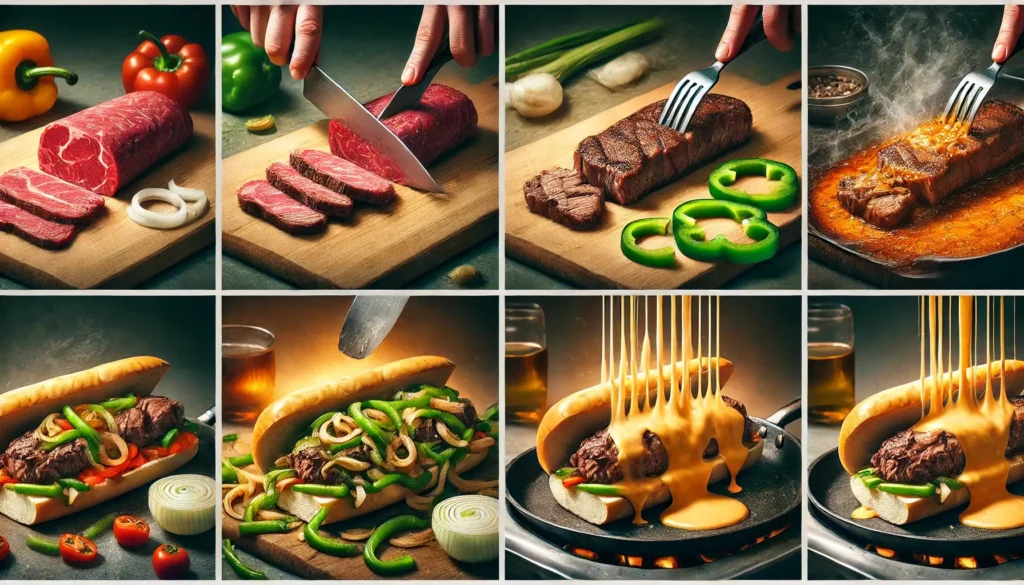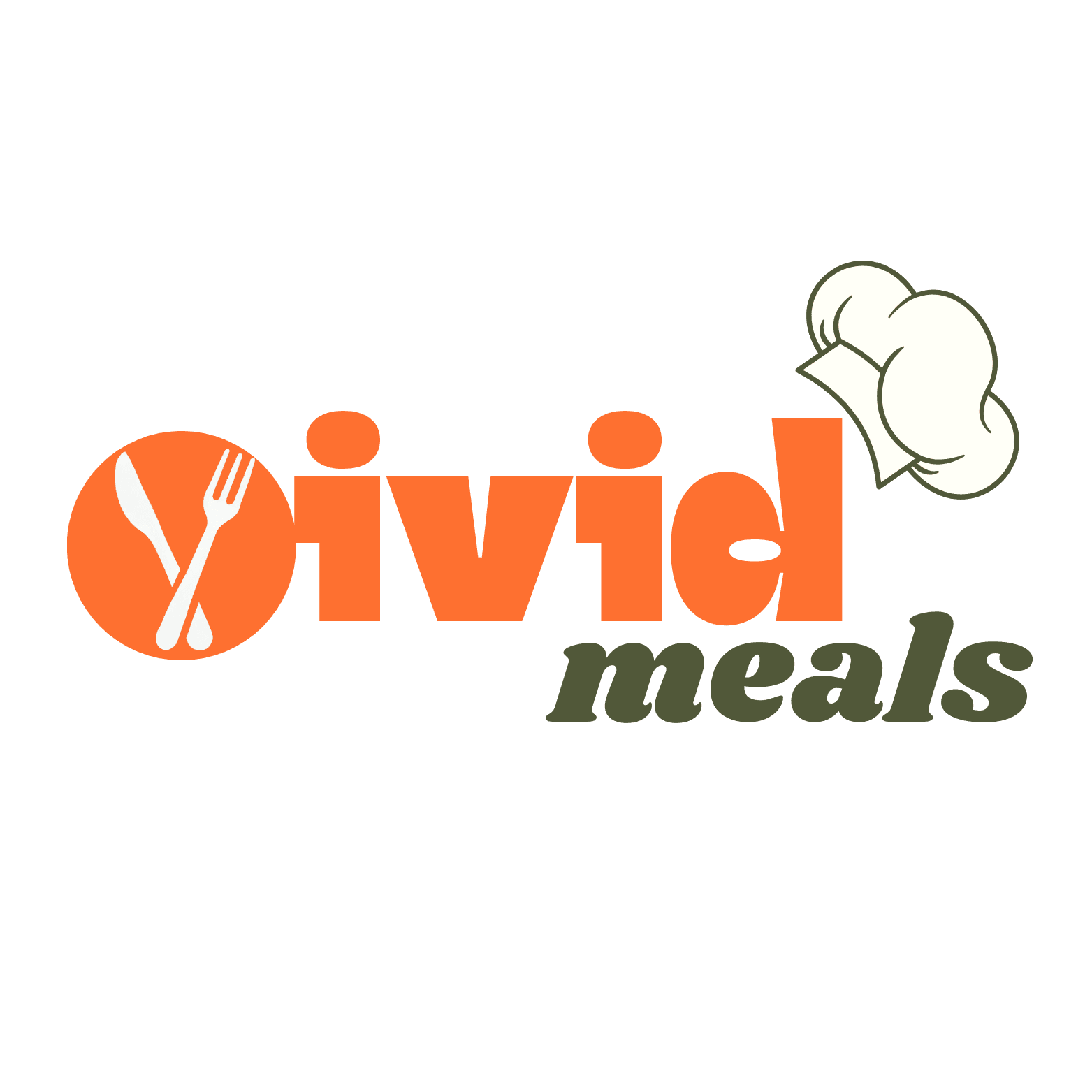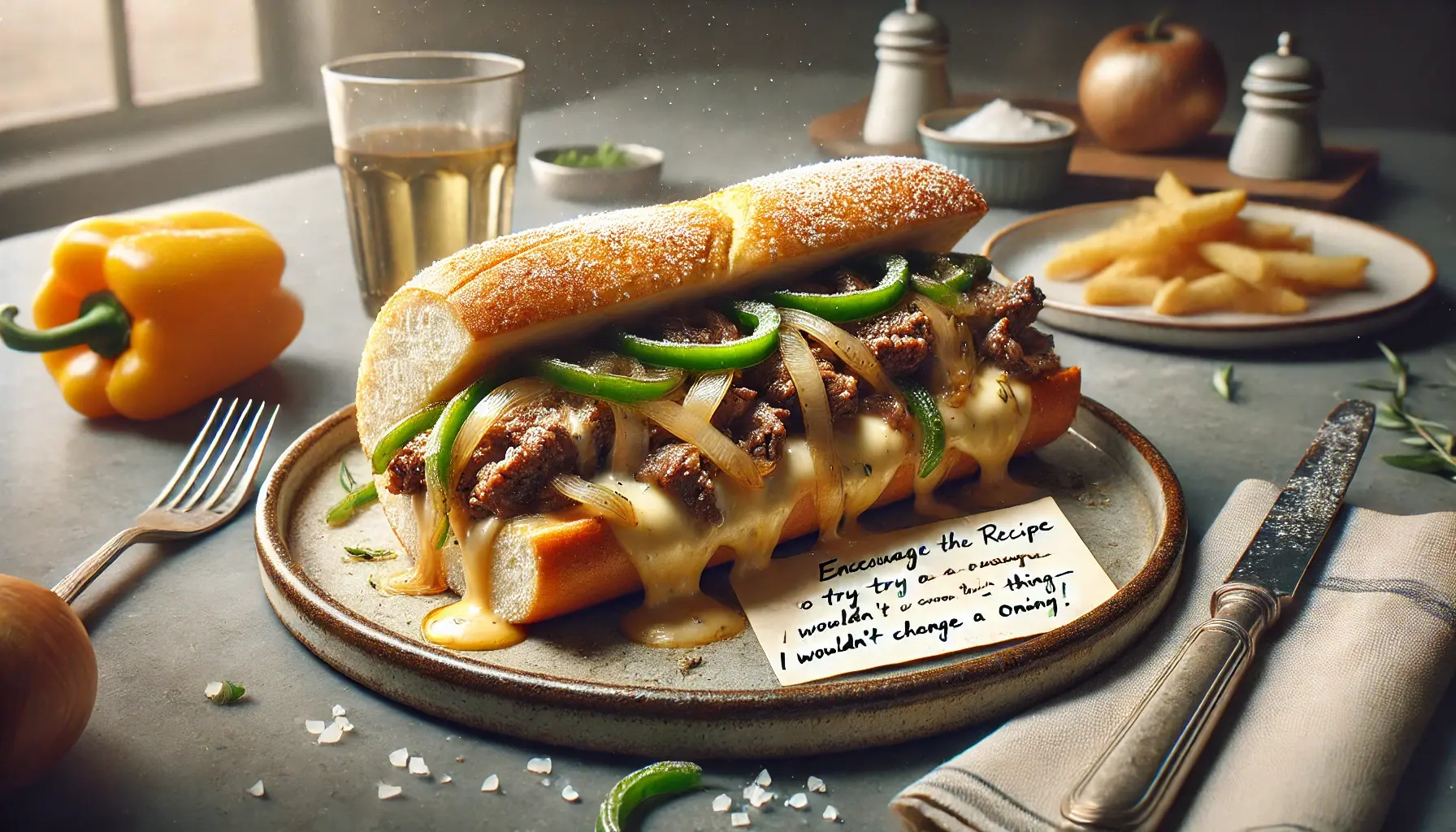When it comes to iconic sandwiches, the Philly cheesesteak stands in a league of its own. Born in the bustling streets of Philadelphia, this hearty, flavorful sandwich has captured the hearts and stomachs of food lovers worldwide. This article will walk you through every step of preparing an authentic Philly cheesesteak, from choosing the right ingredients to assembling the perfect bite. Whether you’re a seasoned chef or a curious home cook, you’ll discover tips and techniques to master this classic dish. Let’s dive in!
Introduction to the Philly Cheesesteak
What is a Philly Cheesesteak?
The Philly cheesesteak is a savory sandwich consisting of thinly sliced ribeye steak, melted cheese, and sautéed onions, all piled into a soft hoagie roll. It’s a street-food favorite with a rich, beefy flavor and a satisfying combination of textures—crispy bread, tender meat, and gooey cheese. Traditionally, toppings like bell peppers or mushrooms are optional, keeping the focus on the simple yet bold ingredients that make this sandwich shine.
The History of the Philly Cheesesteak
This legendary sandwich dates back to the 1930s when Pat Olivieri, a hot dog vendor in South Philadelphia, decided to grill some thinly sliced steak for his lunch. A cab driver caught a whiff of the sizzling beef and asked for his own sandwich, unknowingly sparking a culinary revolution. Over time, cheese was added to the recipe, and the Philly cheesesteak became a local staple. Today, it’s celebrated not only in Philadelphia but around the globe, symbolizing comfort food at its finest.
Stay tuned for the next part, where we’ll delve into the essential ingredients that bring this sandwich to life!
Essential Ingredients for a Classic Philly Cheesesteak
Choosing the Right Cut of Beef
When learning how to prepare a classic Philly cheesesteak sandwich, selecting the perfect cut of beef is crucial. Ribeye steak reigns supreme due to its tenderness, marbling, and rich flavor. Thinly slicing the steak ensures quick cooking and that melt-in-your-mouth texture synonymous with a true Philly cheesesteak. While ribeye is the gold standard, flank steak or sirloin can work in a pinch if properly sliced and seasoned.
Types of Cheese: Provolone, Cheese Whiz, or American?
Cheese is a cornerstone of the Philly cheesesteak, but the choice varies depending on your taste. Provolone offers a mild, creamy flavor, while Cheese Whiz delivers that gooey, indulgent texture many fans adore. For a classic twist, white American cheese is another fantastic option. Ultimately, your choice of cheese helps define your take on this iconic sandwich.
The Role of Fresh Hoagie Rolls
A sturdy yet soft hoagie roll is vital to hold all the juicy goodness together. The bread should be fresh, slightly crusty on the outside, but soft enough to absorb the juices from the steak and melted cheese. Authentic Philly cheesesteaks use Amoroso rolls, but any high-quality hoagie will do. Toasting the bread lightly adds a delightful crunch, elevating every bite.
Optional Additions: Peppers, Mushrooms, and Onions
Though not mandatory, sautéed bell peppers, mushrooms, and onions can enhance the sandwich’s flavor. These additions add a savory depth and subtle sweetness, balancing the richness of the steak and cheese. Remember, the key is to keep the veggies finely sliced and well-cooked, ensuring they complement rather than overpower the main ingredients.
Preparing the Steak
How to Slice Steak Thinly for Optimal Texture
Achieving the perfect thin slice is a game-changer when learning how to prepare a classic Philly cheesesteak sandwich. For best results, partially freeze the steak for 30 to 45 minutes before slicing. This technique firms up the meat, making it easier to cut razor-thin slices. Using a sharp knife or even a meat slicer helps maintain consistency, which is crucial for even cooking.
Proper Seasoning and Marination Techniques
Seasoning is key to enhancing the steak’s natural flavors. A simple sprinkle of salt and pepper often suffices, but you can also use a light marinade for added depth. A quick mix of Worcestershire sauce, garlic powder, and a dash of soy sauce can infuse the beef with subtle umami flavors, elevating the sandwich to a gourmet experience.
Cooking the Steak: Griddle vs. Skillet
The cooking method plays a significant role in crafting an authentic Philly cheesesteak. Traditionally, a flat-top griddle is used, as it allows the steak to cook evenly while retaining its juices. However, a cast-iron skillet can work just as well for home cooks. Heat the pan to medium-high, add a touch of oil, and cook the sliced steak in batches, ensuring it browns beautifully without overcrowding. Aim for tender, slightly caramelized beef that bursts with flavor in every bite.
Stay tuned for the next sections, where we’ll explore the cooking process in more detail and bring your Philly cheesesteak to life!
Cooking the Perfect Philly Cheesesteak Filling

Sautéing Onions and Other Vegetables
Mastering how to prepare a classic Philly cheesesteak sandwich involves perfecting your vegetable prep. Start by heating a little oil or butter in a skillet over medium heat. Add thinly sliced onions and cook until they become soft and golden. If you’re adding bell peppers or mushrooms, toss them in after the onions have softened. Stir occasionally to ensure even cooking and a touch of caramelization for extra flavor.
Melting the Cheese to Perfection
When it comes to cheese, timing is everything. Once your steak and vegetables are fully cooked, lower the heat and add your chosen cheese directly to the skillet. Cover the pan for a minute or two to let the cheese melt evenly over the steak and veggies. This step ensures every bite is filled with gooey, cheesy goodness—a hallmark of the classic Philly cheesesteak.
Combining Steak, Cheese, and Vegetables
The magic happens when you combine all the cooked elements. Mix the melted cheese with the steak and sautéed vegetables until everything is evenly coated. The result is a warm, savory filling that’s bursting with flavor and ready to be loaded into your hoagie roll.
Assembling the Sandwich
Toasting the Hoagie Roll for Added Flavor
A great Philly cheesesteak begins with a perfectly toasted hoagie roll. Split the roll lengthwise, but don’t cut all the way through—it should hold the filling snugly. Lightly butter the inside and place it on a hot skillet or under a broiler for a few minutes. This step gives the bread a slight crunch, which contrasts beautifully with the tender steak and gooey cheese.
Layering Ingredients for the Ultimate Bite
Once your roll is ready, it’s time to assemble. Start by spreading the hot steak, cheese, and veggie mixture evenly inside the toasted hoagie. Make sure every inch of the bread is filled to maximize flavor. For an authentic experience, serve immediately while everything is still warm and melty.
For more delicious recipes, check out our guide to making traditional breakfast burritos. Stay tuned for the next sections as we explore exciting variations and serving suggestions!
Variations of the Classic Philly Cheesesteak
Chicken Cheesesteak
For those looking to switch things up, the chicken cheesesteak is a fantastic alternative. Instead of ribeye, thinly sliced chicken breast or thighs are cooked in a similar fashion. The chicken absorbs the same delicious seasonings, providing a lighter but equally flavorful version. If you’re experimenting with how to prepare a classic Philly cheesesteak sandwich using chicken, stick with the same cheese options to retain that signature cheesy melt.
Vegan and Vegetarian Options
Yes, even plant-based eaters can enjoy a version of this iconic sandwich! Swap the steak for thinly sliced portobello mushrooms or plant-based meat alternatives. For the cheese, opt for vegan-friendly options like cashew cheese or plant-based provolone. The hoagie roll remains a key element, ensuring you capture the essence of the original while keeping it completely vegan.
Gourmet and Fusion Takes on the Cheesesteak
Modern twists on the Philly cheesesteak have introduced exciting flavors. Think truffle oil, smoked gouda, or even spicy jalapeños for a fiery kick. Fusion variations, like a Philly cheesesteak taco or pizza, bring new textures and flavors to the table. These innovations show that while the classic sandwich is unbeatable, there’s always room for creativity.
Serving and Enjoying Your Philly Cheesesteak
Best Side Dishes to Pair with a Philly Cheesesteak
When it comes to sides, you can’t go wrong with classics like crispy French fries or onion rings. For a lighter option, a simple coleslaw or a fresh green salad works wonders to balance the rich, savory flavors of the sandwich. If you’re sharing your journey on how to prepare a classic Philly cheesesteak sandwich, pair it with sides that complement the main star without overpowering it.
Beverage Pairings: Beer, Soda, or Milkshakes?
The right drink can elevate your Philly cheesesteak experience. A cold beer, such as a lager or pale ale, cuts through the richness of the sandwich. For non-alcoholic options, an ice-cold soda or a frothy milkshake can be equally satisfying. Whether you’re enjoying this iconic meal at home or sharing it with friends, the right pairing adds a final touch to your Philly cheesesteak feast.
Stay tuned as we wrap up the article with a comprehensive FAQs section to address all your remaining questions!
FAQs About Philly Cheesesteak
What is the Best Cheese for a Philly Cheesesteak?
The best cheese for a Philly cheesesteak largely depends on personal taste. Some prefer the creamy, mild flavor of provolone, while others swear by the gooey indulgence of Cheese Whiz. White American cheese is another classic choice, offering a perfect balance of meltiness and flavor. Whichever cheese you pick, ensure it complements the steak and blends seamlessly into the sandwich. If you’re exploring how to prepare a classic Philly cheesesteak sandwich, experimenting with different cheeses can add a unique twist.
Can I Use a Different Cut of Beef?
While ribeye is the traditional choice due to its tenderness and marbling, other cuts like sirloin or flank steak can also work. The key is slicing the beef thinly to ensure quick cooking and a tender bite. If you’re short on time, pre-sliced beef available at some grocery stores can save you effort without compromising the taste. Just remember, the quality of the beef makes a big difference in how your sandwich turns out.
How Do I Store and Reheat a Philly Cheesesteak?
To store leftover Philly cheesesteak, wrap it tightly in aluminum foil and keep it in the refrigerator for up to two days. When reheating, use a skillet or oven to maintain the sandwich’s texture. Avoid microwaving, as it can make the bread soggy and the steak rubbery. Proper storage and reheating will ensure your Philly cheesesteak tastes as good as it did fresh off the griddle.
Conclusion and Final Tips
Mastering the Classic Philly Cheesesteak at Home
By now, you’ve learned all the essential steps for how to prepare a classic Philly cheesesteak sandwich. From choosing the right cut of beef to perfecting your cheese melt, each step plays a crucial role in achieving that authentic taste. Don’t be afraid to make the recipe your own by trying different cheeses or adding your favorite toppings.
Why the Philly Cheesesteak is Worth the Effort
Though the process may seem detailed, the payoff is well worth it. Few dishes capture the heart and soul of a city quite like the Philly cheesesteak. Its rich, savory flavors and satisfying textures make it a crowd-pleaser every time. Whether you’re sharing it with family or enjoying it solo, there’s no denying the joy of biting into a perfectly made cheesesteak.
For more recipes and tips, explore other guides on Vivid Meals to elevate your cooking game!

